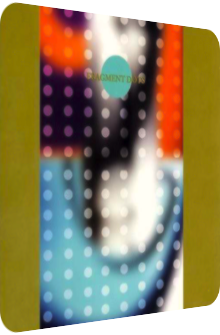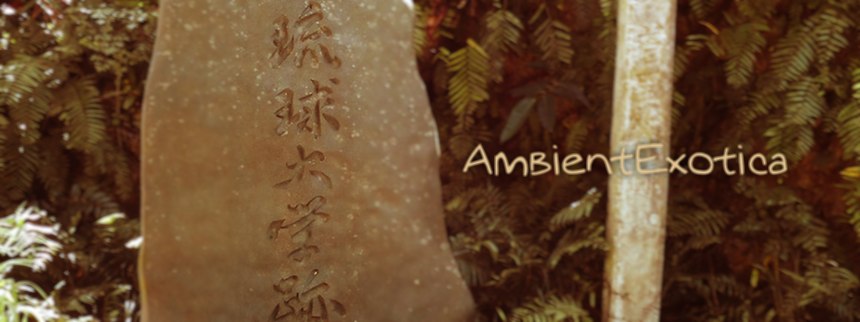
Tetsu Inoue
Fragment Dots
2000
When it comes to Drone music, Tetsu Inoue is one of my very favorite artists since the much favored Japanese tone sequences and traits are, if not perfectly overt, still hidden in his Ambient synthscapes of pristine purity. Especially his later solo works Yolo (2005) and Inland (2007) are gorgeous pieces of art, totally entrancing, yet bubbling and mediating between resplendent synth washes and quieter undertones with a delicious aftertaste. Fragment Dots however, released in 2000 on the Tzadik label, is an entirely different beast. Whereas artists tend to present ever-increasingly complex and convoluted sounds and arrangements as their career progresses, it so happens that Inoue made a reverse U-turn, as his earlier works are much more experimental. Fragment Dots describes the artist's approach perfectly: instead of a mellow mirage of synth washes traversed by gentle clicks, Inoue chops every sound source to pieces, making the CD sound as if it was scratched and full of digital jitters, or, as the album title firmly states, fragmented dots. Since such music inherits the tendency to be hard to swallow, the Ambient musician is keen on presenting a huge variety of different textures which are then meshing and conflating – and occasionally clashing – with each other. There is a good amount of warmth even in those vignettes that are focused on the colder sounds. Due to the omnipresence of clicks and torn apart sounds, Fragment Dots is a potentially tiresome experience, which is probably a strange remark to make, as sarcastic readers might note that all Ambient albums are in a way tranquilizing and mollifying. But here, the fatigue can be caused by the many fissures, the stop-and-go mentality of the sounds and the merciless execution of the formula. The ten tracks, however, work really well in unison, so if the listener tries to cope with – or actually embraces – its given structure, he or she is in for another hypnotizing album by Tetsu Inoue, albeit for different reasons.
Cut And Clicks pays a nonsurprising homage to the Clicks & Cuts genre which was so well-established at the turn of the millennium, having been distilled from the wider IDM subgenre whose naming convention is slated to this day due to the overarching term that tries to encapsulate every bit of electronic music that is not based on a steady 4/4 beat. Tetsu Inoue's opener does not take any hostages and unleashes an infinite amount of chopped staccato slivers and crackles. The jitter-resembling output does not only resemble the 90's works of Oval, but is a prime example of a track that is all about textures: sliced organ chords, short shower samples, wonky lasers and glacial chimes intertwine, and they all have their fragmented state in common, linking back to the album title. The cornerstone and stylistic theme is set with this opener, the remaining tracks present the bubbling formula in varying but cohesive ways: while Active Beauty comprises of a more gelid synthscape with blue-tinted crystal shards and whitewashed legato (!) sine waves serving as a backdrop for the slowly evolving organ stabs, Spectral Disk captures ghostly pulses and blebs and puts them in front of a pitch-black nothingness, resulting in a particularly luminescent bumpy ride. The admixed wind chimes are the most glowing ones on the album, as they are allowed to shimmer unperturbed for a moment before they are bit-crushed by Inoue. Super Digital revs up the Glitch factor and consists of Geiger counter-like splutters, sizzling-hot bubbles and chirping cyberbirds. As its name implies, there are hardly analogue scents of warmth perceptible, making Super Digital the harshest offering.
Modem And I, on the other hand, even delivers the typical soundwaves of its desired artifact in retrospect, as the nostalgia layers start to work in the first minute already, with many mellifluous synth pads, sudden wind gusts and liquid dripstones mimicking the sound that influenced a whole generation. Soft Drink Error simulates the airflow through a straw that reaches the bottom of a soda can, and as such features a threefold soundscape: dry plastic flecks meet aqueous vesicles meet chopped air. Square Curves is a warmer track with the dreamy synth washes Tetsu Inoue is known for. Even though they are fragmented, their euphony is enchanting and bridges the advected static noise particles and the short moments of silence well enough to make this a signature track. Whereas Micro Timber is expectedly keen to present chopped synthetic wood in tandem with wobbling laser sounds, delicious Space-Age chords and blurred machine drones to the listener, Head Set gyrates round hibernal zipper-like bytes and accentuating bass bursts as well as superbly texturized artificial marimbas. The outro is particularly dreamy, with a polyphonous intertwining of square lead pads and thin bit bursts. The final Portable Noise offers a particularly granular static noise layer and weaves electric buzzes as well as almost quiescent chords into it. Once this haze is gone, the synthscape resembles the lacunar structure of Spectral Disk as it embedds dubby bass bubbles and mellow synth crystals into the black sphere.
Of all the Ambient-related album titles I came across, Fragment Dots is undoubtedly among the most poignant and self-explanatory ones out there, explaining the concept arc and aesthetics of both Tetsu Inoue and the Glitch or Clicks & Cuts movement of the early 00's to the point. Even fans of Tetsu Inoue might be put off by the many fissures, cracks and alcoves that literally ensue thousands of times between each sudden sound glint. As soon as a sound arrives, it is already out of reach; only seldom is a short decay phase audible, but all in all, Fragment Dots is a dry, saturated and piercing work. In contrast to Inoue's aforementioned dreamscapes Yolo and Inland, it is a highly experimental album that demands quite a lot from the listener. If you got to know the artist through his later works, you might notice that all the ingredients, patterns and surfaces are definitely in here, but they are, well, in a fragmented state. This state alone can be blamed for the missing accessibility at first, as the textures themselves are gorgeous, versatile and magnanimously spread throughout the ten tracks; it is simply the dot-like cavernous structure that transforms a potentially languorous album into a jitter-esque affair. Since so many short melody bursts and euphonious capsules are in here, I am still of the opinion that this is a splendid works for fans of Oval and, yes, even those listeners who adore Autechre but do not mind a silkier approach. Since even the Glitch elements seem to be transfigured and mild on Fragment Dots, I recommend this album to people who are much more fond of different textures and states in electronic music rather than balmily bolstered mélanges.
Ambient Review 151: Tetsu Inoue – Fragment Dots (2000). Originally published on Nov. 28, 2012 at AmbientExotica.com.
